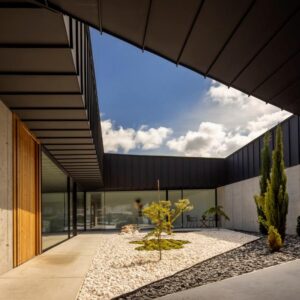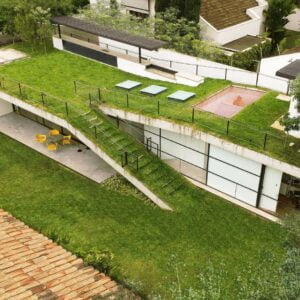Japan, a land of tradition and innovation, has always been at the forefront of architectural evolution. From the iconic wooden structures of ancient temples to the sleek skyscrapers of Tokyo, Japanese architecture is a testament to the nation’s ability to adapt and innovate. One such innovation that has recently captured the imagination of architects and homeowners alike is the polyhedral roof. This multifaceted design, reminiscent of a gemstone, is not just aesthetically pleasing but also functionally superior. Let’s explore how polyhedral roofs are redefining the skyline of modern Japanese homes.


1. Aesthetic Brilliance of Polyhedral Designs
The beauty of a polyhedral roof lies in its geometric complexity. Each facet, each angle, reflects light differently, creating a dynamic play of shadows and highlights. This ever-changing interplay transforms the home into a living art piece, with the roof acting as its crown jewel. The multifaceted design also allows architects to experiment with different materials, from traditional tiles to modern metallic finishes. The result is a roof that is not just a protective covering but a statement of style and sophistication.

2. Enhanced Spatial Dynamics Inside
The interior benefits of a polyhedral roof are manifold. The angular design allows for unique ceiling structures, creating spaces that are both expansive and intimate. Vaulted ceilings, loft spaces, and skylights become natural extensions of the roof’s design. The interplay of angles and planes offers a sense of depth and dimension, making interiors feel larger and more open. Moreover, the design facilitates better air circulation, ensuring homes remain cool in summer and warm in winter.

3. Optimal Utilization of Natural Light
One of the standout features of polyhedral roofs is their ability to harness natural light. The multiple facets, oriented in different directions, capture sunlight throughout the day. This ensures that the home remains bathed in a soft, natural glow, reducing the need for artificial lighting. The strategic placement of windows and skylights further amplifies this effect. Not only does this make for a brighter living space, but it also contributes to energy efficiency, reducing electricity bills.

4. Structural Integrity and Durability
Beyond aesthetics and functionality, polyhedral roofs offer superior structural integrity. The geometric design distributes weight evenly, making the structure more resilient to external pressures like wind and snow. This is especially beneficial in regions prone to heavy snowfall, like certain parts of Japan. The design ensures that snow slides off easily, preventing accumulation and potential damage. Furthermore, the use of modern building materials in these roofs enhances their longevity, ensuring they stand the test of time.

5. A Nod to Sustainable Architecture
In an era where sustainability is paramount, polyhedral roofs are a step in the right direction. Their design promotes energy efficiency, reducing the home’s carbon footprint. The use of sustainable building materials, coupled with the roof’s natural ability to regulate temperature, makes it an eco-friendly choice. Moreover, the design’s adaptability means it can easily accommodate solar panels or green roofing solutions, further enhancing its environmental credentials.
The polyhedral roof, with its geometric charm and functional brilliance, is a testament to Japan’s architectural prowess. It represents a perfect blend of tradition and modernity, aesthetics and utility. As the world grapples with challenges like urbanization and climate change, innovations like the polyhedral roof offer a beacon of hope. They showcase how, with creativity and technology, we can build homes that are not just beautiful but also sustainable and resilient.












